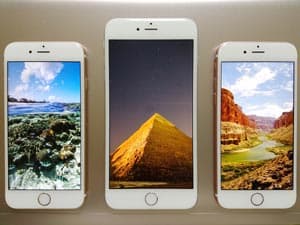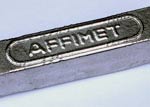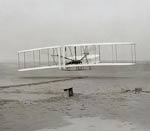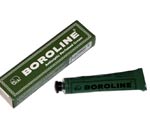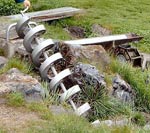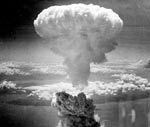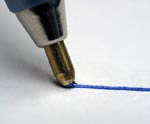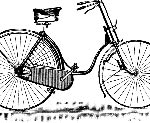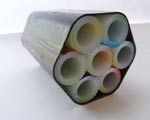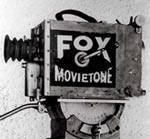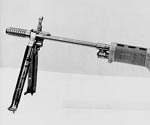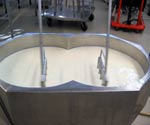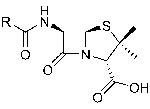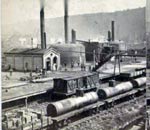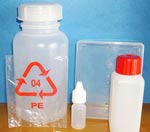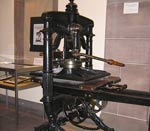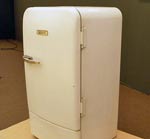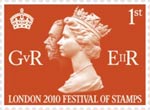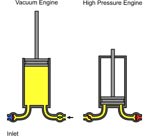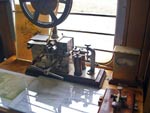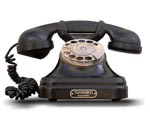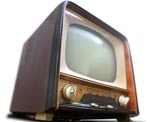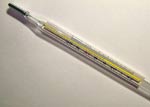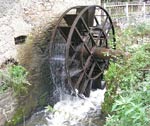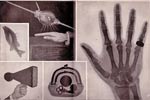Top 10 Inventions of the 21st Century
Usually these lists deal with what was, but after finishing my top ten inventions of the 19th and 20th century lists, I thought it might be fun to do a list of what might be coming down the road as well. Obviously, such a list is purely speculative, but the technologies/discoveries I list here are not too far-fetched to be plausible, especially as many of them are already in development today. As such, with the recognition that this list is subject to change without notice and highly conjectural throughout, here are my choices for the top ten most important inventions/discoveries that will be made in the 21st century:
10. Robotics
Robots have been around since the twentieth century in one form or another, but it won’t be until the twenty-first century that they will become truly common and useful. Performing everything from fire-fighting to carpentry, by the end of the century every house will have at least one robot programmed to perform any number of tedious or dangerous chores humans would rather not deal with, and they will be perfect to leave at home to walk the dog (heck, your dog might even be a robot) and keep an eye on the house when you’re away. Their military applications are even more promising, with robots being used to clear mine fields and otherwise perform missions deemed too dangerous for their human counterparts. How smart will they be? Only as smart as you want them to be; they’ll still be dependent upon human beings for their programming and maintenance after all, so don’t look for them taking over the world just yet.
9. Genetic Engineering
It’s difficult to imagine that we are on the threshold of being able to program our own DNA, but that is the next step in human evolution. By the end of the century, parents will be able to determine the sex, intelligence, and even hair and eye color of their child while turning off any possibly dangerous genetic defects their offspring might have been in line to inherit. This ability to “design” an embryo won’t be confined to humans either; by the year 2100 we might well have the ability to breed elephants no larger than a Golden Retriever or make a mouse the size of a house-cat. Who knows, we might even be able to merge DNA strands from two different kinds of animals and create a hybrid elephant/mouse mix. Ready to play God everyone?
8. Hypersonic Transportation
Just as the airplane revolutionized travel in the twentieth century, there is no reason to believe that evolution to ever faster speeds is going to end anytime soon. As such, it is likely that before the dawn of the next century people will be able to fly between London and Tokyo at Mach 10 speeds and arrive at their destination in just over two hours. It is said that by the end of the 19th century, the fastest a man could travel on a regular basis was 60 mph (by train). By the end of the 20thcentury, that speed had increased ten-fold, to 600 mph (by plane). By the end of this century, it is not inconceivable to predict that we’ll see another ten-fold increase, making it possible for the average man, woman, or child to regularly travel at speeds in excess of 6,000 mph! Imagine: a person could fly from Boston in mid-afternoon, grab lunch in Tokyo, and be home by evening. Consider the frequent flyer miles one could rack up doing that!
7. Free Energyhttps://youtu.be/L6mWIKy7eqo
The holy grail of science has been the acquisition of energy that comes from non-polluting sources (i.e. oil, natural gas, coal, etc.). By the end of the century it is likely that dream will become a reality. However, it will come from several sources and in very different ways. Geo-thermal, wind, biomass, clean coal, nuclear and solar energy will be a part of the change, but other more exotic technologies may also emerge. Technologies such as fusion and zero-point energy generators, either of which would provide an inexhaustible source of non-polluting, non-radioactive energy. At this time, however, both energy sources are considered fantasy technologies- I imagine much the same might have been said about nuclear power a century ago.
6. Artificial Intelligence
It’s one thing to make a robot do daily chores around the house; it’s quite another to get it to think about how best to carry out its task. Welcome to the world of artificial intelligence, where machines will actually be capable of learning, planning, deciding, considering, comparing, aligning and even abstract thinking. They won’t be quite on par with the human brain—and their abilities will be largely confined to a specific area rather than broad-based—but A.I. will be the next big advance in technology, and it could appear at a primordial stage within the next few decades. By the dawn of the twenty-first century your car, your home, or even your artificial mechanical pet (AMP) might be smarter than your brother-in-law.
5. Nanotechnology
It sounds like something right out of Star Trek, but nanotechnology—those microscopically small, self-replicating machines capable of puncturing the walls of a single human cell—may well be a reality a few decades from now. Their ability to effect repairs on the human body on a microscopic level—as well as repair or enhance other non-organic technologies—might be the next great step in human evolution, while their self-replicating capabilities will be used to manufacture everything from microchips to potato chips. The only problem is, what if we can’t shut off the technology and pretty soon trillions of tiny nanites infect the entire world? Nah… will never happy.
4. Human Cloning
Actually, cloning has been known since the twentieth century, so it’s nothing really new. However, if we can clone a sheep, it should be possible to clone a human being, which is probably going to become a common-place reality in the waning years of the twenty-first century. Of course, people won’t necessarily make carbon copies of themselves just for fun, but as a means of replacing faulty organs and regenerating lost limbs. Lose a leg? Take a few cells from your body, grow a new one, and have it attached (probably by robotic doctors) in a few hours. Got a bad ticker? No, problem. You can grow a new one in a flask in a few weeks and then have the old one replaced. Life spans of two or even three hundred years might be within reach through this method, making it a virtual fountain of youth—or at least, a fountain of longevity.
3. Antigravity
Yes, I know it sounds unlikely, but the creation of monopoles (magnets that have only one pole)—while daunting and (so far) impossible to do—might be quite doable in another seventy years or so. (Technically this wouldn’t be true anti-gravity but magnetism. However, the effect would be similar.) Once it is possible, wheels will be a thing of the past as everything will ride on a cushion of magnetic fields, with propulsion being afforded by merely pointing your craft the direction you want to go and letting the magnetic forces of the Earth itself do all the work. Now, if we could only figure out a way to stop the thing once it got going…
2. Automation
By the end of the 21st century, your house, car, refrigerator, etc. will be smarter than you and capable of carrying out nearly any task you might have in mind (this would work hand-in-hand with your personal robot—point 10 above). Not only would your house be entirely automated, but so would just about everything else, from airliners and factories to fighter planes and warships. Even entire cities would work off a central computer core that would be responsible for doing everything from turning on the park’s sprinkler system when it detected dehydration in the lawns to operating the traffic grid and turning on the lights at dusk. Humans would still make all the big decisions—hopefully—and maintain these systems (again, with the help of their robot pals) but for the most part, people will be out of the equation, thereby giving them more time to watch their favorite programs on holographic televisions.
1. Hydrogen Powered Cars
Since people have such a love affair with their automobile, it’s hard to imagine the car disappearing anytime soon. However, it is conceivable that by the middle of the twenty-first century, the good old internal combustion engine as we know it will be as obsolete as the steam engine. Electrical cars and hybrids will be the short-term norm, but they will find considerable competition coming from hydrogen-powered vehicles, that will have the same power as their twentieth century fossil-fuel sucking counterparts but run on hydrogen and leave only water vapor in their wakes. Not that you would get to drive the things, of course. That’s where the traffic grid computers come into play (see point 2 above); all you need to do is sit back and let your car take you wherever you tell it while you read a book (whatever that is.)





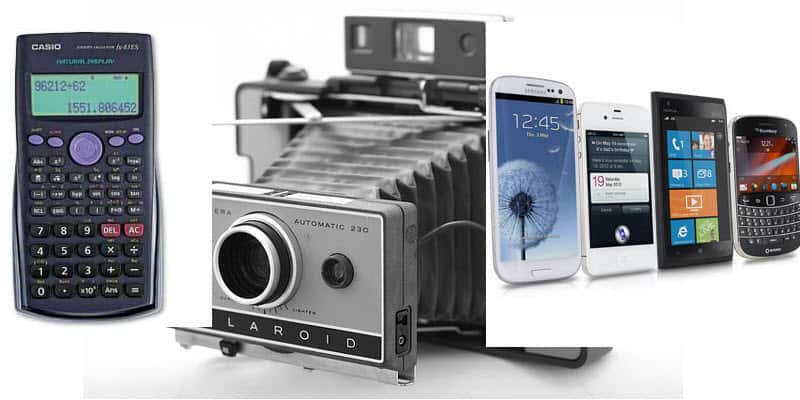




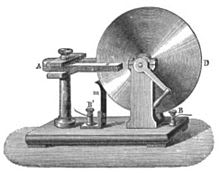 The phenomena of electricity had been known by tmahe ancient Greeks.
The phenomena of electricity had been known by tmahe ancient Greeks. 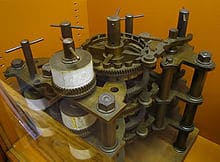 Charles Babbage’s analytic engine is often seen as the forerunner of the modern computer. It has the ability to be programmed and calculate for this. From these early experimental machines, we saw the development of later electronic versions. wasn’t really developed until after the 1940s.
Charles Babbage’s analytic engine is often seen as the forerunner of the modern computer. It has the ability to be programmed and calculate for this. From these early experimental machines, we saw the development of later electronic versions. wasn’t really developed until after the 1940s.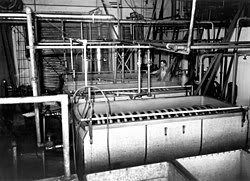 Developed by
Developed by  Developed by John Wesley Hyatt. Hyatt was an American printer and inventor. He was looking for a cheap substitute to ivory billiard balls. Hyatt combined cellulose nitrate and camphor to produce a mouldable versatile material – celluloid.
Developed by John Wesley Hyatt. Hyatt was an American printer and inventor. He was looking for a cheap substitute to ivory billiard balls. Hyatt combined cellulose nitrate and camphor to produce a mouldable versatile material – celluloid. The telephone was invented in 1876 by
The telephone was invented in 1876 by 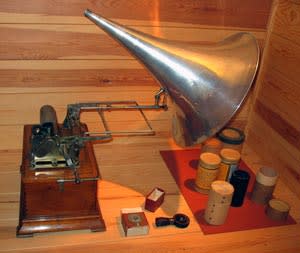 Thomas Edison found that sound could be captured and replayed using a rotating cylinder covered with paraffin paper and a stylus. In December 1888, Edison applied for a patent and over next few years helped to develop the modern gramophone based on the wax – cylinder model.
Thomas Edison found that sound could be captured and replayed using a rotating cylinder covered with paraffin paper and a stylus. In December 1888, Edison applied for a patent and over next few years helped to develop the modern gramophone based on the wax – cylinder model.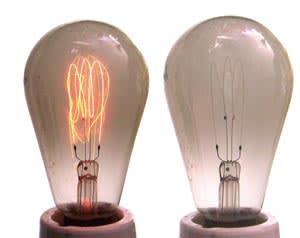 Throughout the nineteenth century, inventors produced simple electric lights. For example, Joseph Swan produced a simple electric light, but, he struggled to maintain a power source and the filament soon burned out when the vacuum was exhausted. It was Thomas Edison who made the lightbulb into a practical low current version. He used a filament based on a burned sewing thread.
Throughout the nineteenth century, inventors produced simple electric lights. For example, Joseph Swan produced a simple electric light, but, he struggled to maintain a power source and the filament soon burned out when the vacuum was exhausted. It was Thomas Edison who made the lightbulb into a practical low current version. He used a filament based on a burned sewing thread.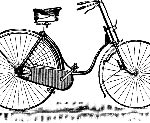 Velocipedes were invented early in the nineteenth century. The most popular at the time was the Penny Farthing, with its huge big wheel. But, the big advancement in bike technology came with the introduction of a chain to link pedals to back wheel. This enabled a higher speed without relying on a huge wheel. The key model in the chain bike was the Rover Safety bike developed by John Kemp Starley.
Velocipedes were invented early in the nineteenth century. The most popular at the time was the Penny Farthing, with its huge big wheel. But, the big advancement in bike technology came with the introduction of a chain to link pedals to back wheel. This enabled a higher speed without relying on a huge wheel. The key model in the chain bike was the Rover Safety bike developed by John Kemp Starley.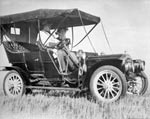 Motor Carriage – 1895
Motor Carriage – 1895 Until the 1890s, Aluminium was considered a precious metal because it was so hard to isolate. However, Ohio chemist, Charles Martin Hall discovered how to isolate Aluminium, through a process of electrolysis. This simple method enabled high quantities of aluminium to be produced. Its price fell from $18 a pound to 18 cents. Aluminium has become one of the most popular and versatile metals in industry.
Until the 1890s, Aluminium was considered a precious metal because it was so hard to isolate. However, Ohio chemist, Charles Martin Hall discovered how to isolate Aluminium, through a process of electrolysis. This simple method enabled high quantities of aluminium to be produced. Its price fell from $18 a pound to 18 cents. Aluminium has become one of the most popular and versatile metals in industry. Invented by John Boyd Dunlop; it was developed as a way to make tricycle riding more comfortable. His first attempt involved using an old garden hose fitted with air. He later developed this idea using a rubber pneumatic tyre and filed for a patent in 1888. It was later used on both bikes and motor cars.
Invented by John Boyd Dunlop; it was developed as a way to make tricycle riding more comfortable. His first attempt involved using an old garden hose fitted with air. He later developed this idea using a rubber pneumatic tyre and filed for a patent in 1888. It was later used on both bikes and motor cars.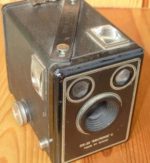 Box Camera – 1888
Box Camera – 1888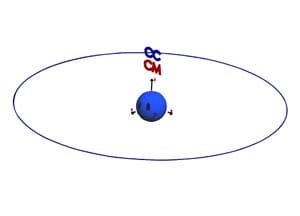 Joseph Thompson was the first scientist to show that the atom wasn’t the smallest element, but, was actually composed of even tinier particles of which electrons were one.
Joseph Thompson was the first scientist to show that the atom wasn’t the smallest element, but, was actually composed of even tinier particles of which electrons were one.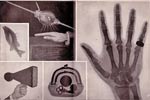 Marie Curie
Marie Curie
 Karl Landsteiner isolated different blood groups enabling the first successful blood transfusion later.
Karl Landsteiner isolated different blood groups enabling the first successful blood transfusion later. The
The 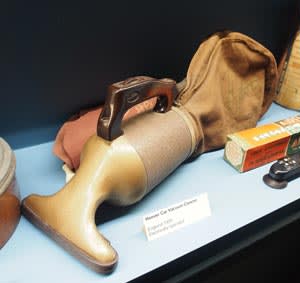 James Murray Spangler invented the electric vacuum cleaner. The first model used a broomstick, pillow and a box containing electric motor and fan. He applied for a patent in 1908. William Hoover helped finance its development for the mass market.
James Murray Spangler invented the electric vacuum cleaner. The first model used a broomstick, pillow and a box containing electric motor and fan. He applied for a patent in 1908. William Hoover helped finance its development for the mass market. Edward Appleton developed a way of detecting aircraft using sonic radar. This proved useful in the Second World War for the British who pioneered the use of radar.
Edward Appleton developed a way of detecting aircraft using sonic radar. This proved useful in the Second World War for the British who pioneered the use of radar. The first true email system was MIT’s CTSS MAIL, in 1965. But, it only worked for those logged into the system. Email networks included the first ARPANET email sent in 1972 developed by Ray Tomlinson.
The first true email system was MIT’s CTSS MAIL, in 1965. But, it only worked for those logged into the system. Email networks included the first ARPANET email sent in 1972 developed by Ray Tomlinson.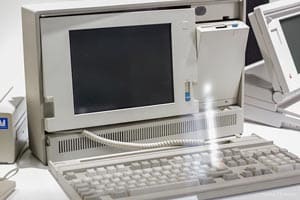

 Tim Berners Lee
Tim Berners Lee